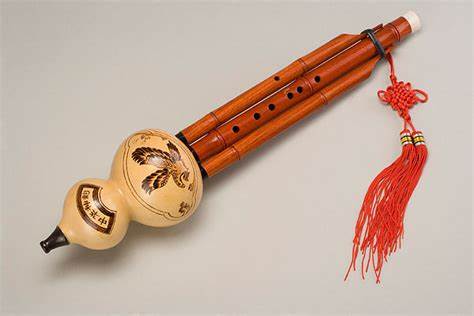Deep analysis and practical practice guide of Fenugreek recycling ventilation technology
Cyclic ventilation is an advanced and practical breathing technique in fenugreek performance. It allows players to breathe without interrupting the continuity of the music, so as to make the playing of long notes, continuous melody lines or fast phrases more smooth and comfortable. The following is a detailed analysis and practice suggestions for fenugreek cycle ventilation techniques.

First, the concept and principle of cyclic ventilation
Cyclic ventilation, as the name implies, is to achieve the effect of inhaling while playing by cleverly coordinating the gas distribution between the mouth and the lungs in a breathing cycle. During the specific operation, when the player blows out the last breath, he plugs the mouthpiece with his tongue, uses the remaining gas in the mouth to continue to maintain the sound of the note, and inhales quickly, then releases the tongue and blows again to achieve uninterrupted playing.
Second, the step decomposition and practice method of cyclic ventilation
1. Primary stage practice: First of all, the practitioner should master the basic playing skills such as single spit and double spit, and exercise the flexibility of the oral muscles, such as enhancing the oral control ability of air flow by practicing the "toot" sound and rapid enunciation.
2. Tongue blocking mouthpiece exercise: Without playing fenugreek, try to gently block the mouth outlet with the tip of the tongue at the end of the exhalation to maintain the slow flow of air, while trying to inhale quickly. Practice repeatedly to feel the changes in air flow in the mouth and the coordination of tongue movements.
3. Silent cycle ventilation exercise: Hold the fenugreek and try to imitate the above action of tongue blocking mouthpiece in the process of blowing, but there is no need to make sound at this time, the focus is to experience the process of breathing in the interval of blowing.
4. Cycle breathing exercises with sound: Choose some simple long note exercises and try to use cycle breathing techniques at the end of long notes. Initially, you can start practicing with shorter notes and gradually extend the playing time until you can freely use cycle breathing in successive long notes of a song.
5. Integrate into music actual practice: After mastering the basic cyclic ventilation skills, apply them to actual music, especially those that contain continuous long notes, fast continuous notes or need to play multiple melodies in one breath. Through continuous actual practice, the cyclic ventilation skills will be more fluent and natural.
In short, the mastery of cyclic ventilation skills is not a day's work, and requires persistent practice and patient and meticulous exploration. Only through systematic training and continuous practice can we really integrate this high-level skill into the hulusi performance, improve the performance level, and give the music more expressive force and vitality.
 渝公网安备 50010702504639号
渝公网安备 50010702504639号